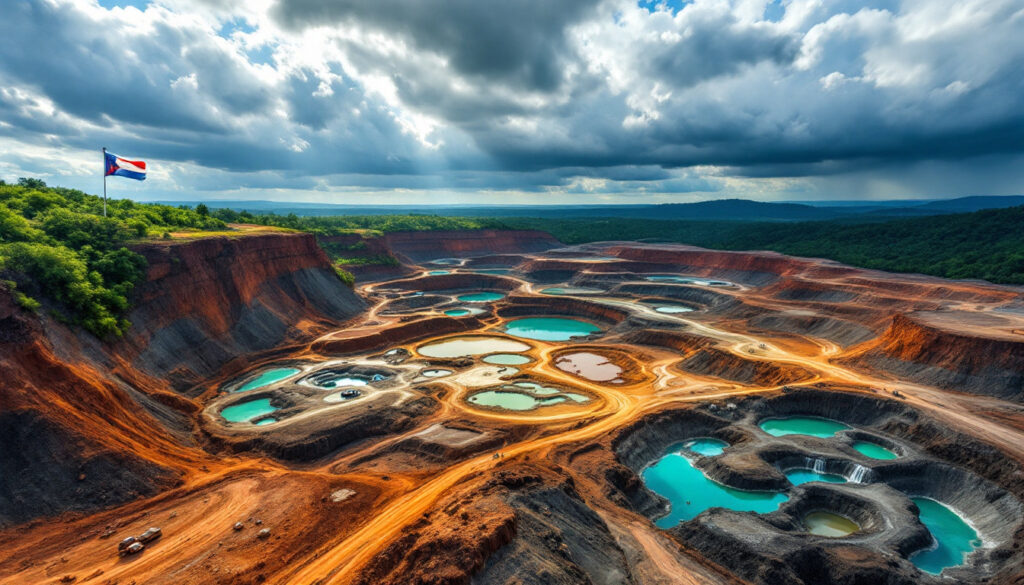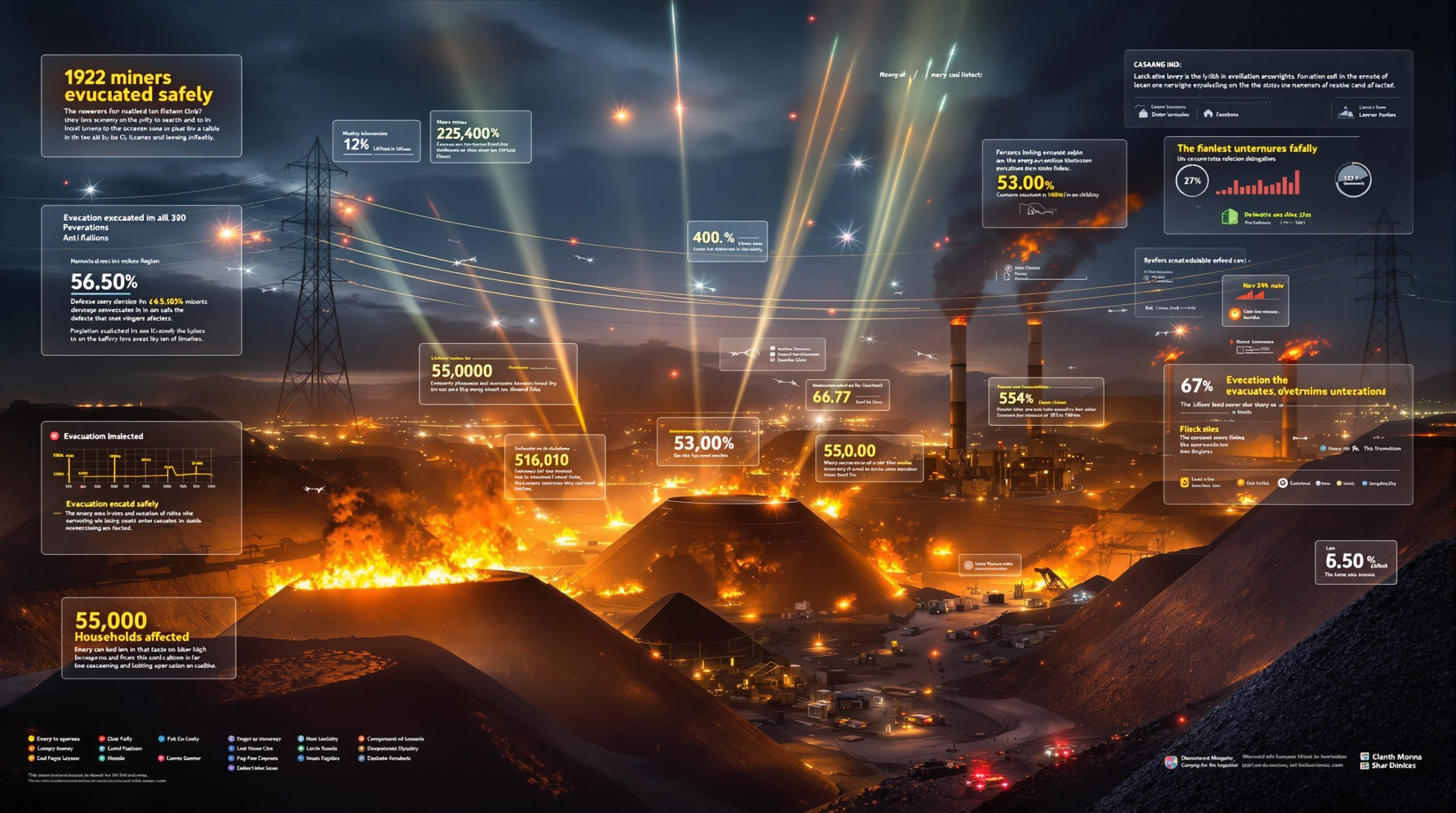First Quantum Withdraws Arbitrations Against Panama: Resolution of Mining Dispute
The formal withdrawal of all arbitrations by Canadian mining giant First Quantum Minerals against Panama marks a significant turning point in their long-standing dispute. This development follows the closure of the Cobre Panama copper mine at the end of 2023 and represents a major shift in the legal landscape between the multinational corporation and the Central American nation.
What Happened with First Quantum Minerals in Panama?
Panama's government recently confirmed receiving formal notification that First Quantum Minerals has withdrawn all arbitration proceedings filed against the country. This withdrawal marks the culmination of tensions that began escalating in late 2023 when the Cobre Panama mine was officially closed.
"The notification of withdrawal marks the end of a contentious chapter in Panama's mining history," noted mining analyst Maria Vasquez. "This represents one of the most significant mining disputes in Central America's recent history."
The $10 billion Cobre Panama project was one of Central America's largest copper mines, producing approximately 350,000 tonnes of copper annually—representing roughly 1.5% of global supply. The mine's significance extended beyond pure economics, as it served as a bellwether for foreign investment confidence in the region.
Timeline of the Dispute
First Quantum's operations in Panama began deteriorating in 2022 when the government initiated a renegotiation of the mining contract. By early 2023, public protests against the mine had gained momentum, citing environmental concerns and insufficient economic benefits for Panama.
The situation reached a critical point in October 2023 when Panama's Supreme Court declared the mining contract unconstitutional. Despite First Quantum's attempts to negotiate a solution, the government ordered the mine's closure by December 2023.
In response, First Quantum initiated multiple international arbitration proceedings in early 2024, seeking damages estimated at $20 billion—significantly higher than most mining dispute claims, which typically range between $5-10 billion according to international arbitration data.
Why Did First Quantum File Arbitrations Against Panama?
Legal Basis for the Arbitrations
First Quantum's arbitration filings were based on several key legal frameworks, including the Canada-Panama Free Trade Agreement (FTA). The company specifically invoked investor-state dispute settlement (ISDS) mechanisms under Chapter 10 of the FTA, alleging violations of Articles 9 (Expropriation) and 10 (Minimum Standard of Treatment).
"Mining companies typically pursue ISDS mechanisms because they allow investors to bypass national court systems and take claims directly to international arbitration," explains international mining law expert Carlos Mendoza. "This approach is particularly attractive when companies perceive bias in local legal systems."
The arbitrations also cited specific provisions from the original mining concession agreement signed in 2017, which First Quantum claimed guaranteed operational stability for a minimum of 20 years. Industry insiders note that the contract contained unusually strong investor protections compared to similar agreements in neighboring countries.
Economic Implications
The economic stakes were exceptionally high for both parties. For Panama, the Cobre Panama mine contributed 3.5% to the country's GDP and generated approximately $375 million annually in export revenue. The closure immediately affected 8,000 direct jobs and an estimated 35,000 indirect positions, disproportionately impacting rural communities with limited alternative employment options.
For First Quantum, the Panamanian operation represented approximately 40% of its global copper production capacity. The company's stock dropped 22% in the immediate aftermath of the closure announcement, representing one of the sharpest mining sector declines in 2023.
Mining finance specialist Jennifer Wong notes: "First Quantum's aggressive arbitration stance reflected not just the direct asset loss but also the long-term strategic implications for its global portfolio balance and debt servicing capacity."
What Does the Arbitration Withdrawal Mean for Mining in Panama?
Immediate Consequences
The withdrawal of arbitrations clarifies the legal standoff that has hung over both parties for more than a year. Panama now faces the challenge of managing the closed mine site, with independent environmental assessments estimating remediation costs between $8-10 billion—substantially higher than the $100 million remediation bond First Quantum had established.
Market analysts suggest the withdrawal may indicate a confidential settlement agreement, though neither party has confirmed such arrangements. Typically, such settlements include provisions for reduced financial claims and shared remediation responsibilities.
"This withdrawal likely represents a calculated business decision rather than a complete abandonment of claims," suggests mining investment trends advisor Eduardo Torres. "Companies often recognize that prolonged legal battles rarely yield full compensation and can damage broader regional relationships."
Long-term Industry Impact
Panama's approach to mining regulation appears to be undergoing fundamental change. The legislature is currently advancing comprehensive reforms to ban open-pit metal mining entirely, representing one of the strictest mining frameworks in Latin America.
The withdrawal sets a precedent for how resource disputes might be resolved in Central America, potentially encouraging governments to take stronger regulatory positions knowing that arbitration withdrawals are possible. Industry data shows that only 38% of mining arbitrations result in significant compensation for companies, making them increasingly risky strategies.
Panama's revised mining code, expected to be finalized in late 2025, will likely incorporate enhanced community consultation requirements, stricter environmental impact assessment protocols, and biodiversity offset mandates requiring 150% reforestation of affected areas.
How Will This Affect First Quantum's Operations?
Financial Implications
First Quantum has already pivoted its investment strategies, reallocating approximately $2.5 billion from Panama to expanding operations in Zambia and Australia. This reallocation has helped stabilize its share price, which had recovered to within 7% of pre-dispute levels by early 2025.
The company's financial restructuring has improved its debt-to-equity ratio from 1.8 to 1.2 following strategic asset sales, though analysts project copper output will remain approximately 18% below pre-closure forecasts through 2027.
"The withdrawal appears financially pragmatic when considering arbitration legal fees, which were projected to exceed $200 million annually as the dispute progressed," notes mining sector economist Roberto Alvarez. "Companies increasingly recognize that negotiated exits can preserve capital for productive investments elsewhere."
Strategic Repositioning
First Quantum has embarked on a comprehensive corporate rebranding, emphasizing enhanced ESG challenges and partnerships with international development organizations to audit its global operations. This pivot reflects lessons learned from the Panama experience and aims to rebuild investor confidence after governance challenges.
While re-entry into Panama seems improbable under current conditions, First Quantum retains exploration rights in neighboring Costa Rica and has indicated interest in leveraging regional infrastructure and expertise developed during its Panamanian operations.
The company has also accelerated technology investments in automated mining systems that require smaller physical footprints and reduced water usage—innovations directly responding to the environmental concerns that contributed to the Panama dispute.
What Are the Environmental Considerations of the Cobre Panama Mine Closure?
Environmental Impact Assessment
Post-closure environmental audits have identified approximately 12,000 hectares of degraded land around the former mine site, with particular concern regarding mercury contamination in the Río San Juan watershed. Independent testing has detected elevated heavy metal concentrations at 14 monitoring stations downstream from the mine.
The environmental legacy extends beyond immediate contamination. The mine operation deforested an estimated 5,000 hectares of protected tropical forest habitat, creating fragmentation effects that wildlife biologists estimate will take 50-75 years to naturally regenerate.
Dr. Lucia Gonzalez, tropical ecology specialist, observes: "The Cobre Panama case illuminates the particular vulnerability of tropical ecosystems to mining operations. Recovery timelines in these biodiversity hotspots typically exceed standard remediation planning horizons."
Sustainability Concerns
The case highlights the fundamental tension between global decarbonization goals and local environmental integrity. Cobre Panama supplied copper sufficient for approximately 6 million electric vehicles annually, representing a significant contribution to global clean energy supply chains.
Panama's approach to future resource projects will likely incorporate mandatory "biodiversity offsets"—a practice gaining traction in mining regulation globally. These requirements typically mandate conservation or restoration activities that exceed the ecological impact of permitted development.
The government now requires perpetual water monitoring around former mining sites, establishing a new precedent for long-term environmental accountability in tropical mining contexts. This approach acknowledges that acid mine drainage and heavy metal leaching can continue for decades after operations cease.
FAQ About First Quantum and Panama Mining Dispute
What was the Cobre Panama mine?
Cobre Panama was a massive open-pit copper mine representing a $10 billion investment by First Quantum Minerals. The project included a processing plant, port facility, and power station, making it one of the most integrated mining operations in Central America. At peak production, it employed over 8,000 workers and produced 350,000 tonnes of copper concentrate annually.
Why did Panama close the Cobre Panama mine?
The closure followed widespread public protests over potential water contamination and deforestation risks. A pivotal Supreme Court ruling deemed the mining concession unconstitutional, citing procedural violations in the original approval process and inadequate environmental safeguards. Public opinion polls conducted in 2023 showed that 78% of Panamanians supported the mine's closure despite its economic contributions.
What type of arbitrations did First Quantum file?
First Quantum filed multiple claims under international investment treaties, particularly invoking Chapter 10 of the Canada-Panama Free Trade Agreement. These arbitrations alleged violations of fair and equitable treatment standards and unlawful expropriation without adequate compensation. The company pursued claims through both the International Centre for Settlement of Investment Disputes (ICSID) and under UNCITRAL arbitration rules.
Does this withdrawal mean First Quantum has abandoned all claims?
While the formal arbitrations have been withdrawn, industry experts speculate that confidential side agreements may address certain fiscal obligations and asset disposition. Panama retains the right to pursue counterclaims for environmental damages, though the withdrawal likely limits the scope of future legal actions between the parties.
Conclusion: Future of Mining Investment in Panama
The resolution of the First Quantum dispute establishes Panama as one of the most cautious jurisdictions for mining stocks guide investors in Latin America. While traditional extractive companies may hesitate to engage, the country could attract a new generation of mining firms specializing in smaller-scale, less environmentally intrusive operations.
Panama's emphasis on community consent and ecological preservation aligns with evolving global standards for resource governance. The experience demonstrates how rapidly social license considerations can overturn even well-established mining operations backed by formal legal agreements.
For global miners, the case underscores the increasing importance of proactive stakeholder engagement and transparent environmental practices. Companies that can demonstrate circular economy principles and meaningful local development contributions will likely find more receptive operating environments, even as regulatory requirements intensify.
As the energy transition accelerates copper demand—projected to increase 50% by 2035—Panama's experience illustrates both the urgency of responsible mineral development and the rising costs of extraction models that fail to adequately address environmental and social concerns.
Want to Spot the Next Major ASX Discovery Before the Market?
Gain a strategic advantage in the mining investment space with Discovery Alert's proprietary Discovery IQ model, which delivers instant notifications when significant mineral discoveries are announced on the ASX. Visit the discoveries page to see how early identification of major finds like De Grey Mining could transform your portfolio.




